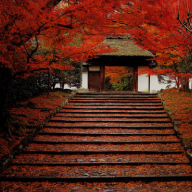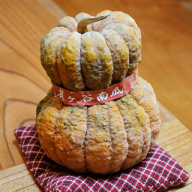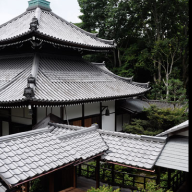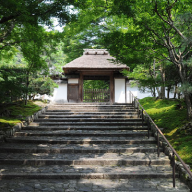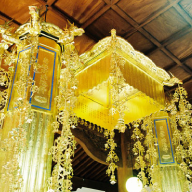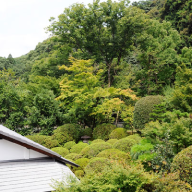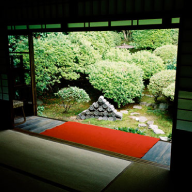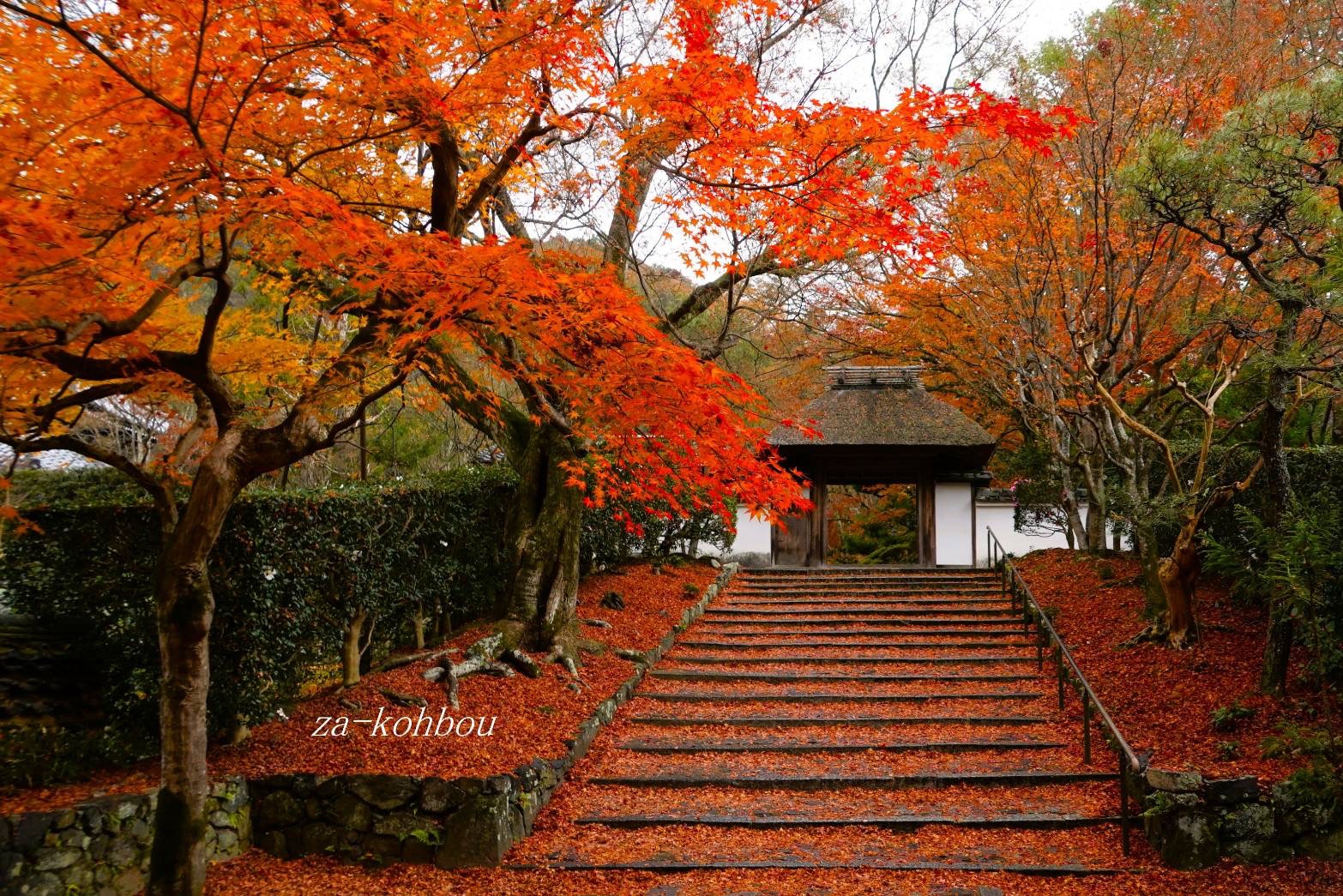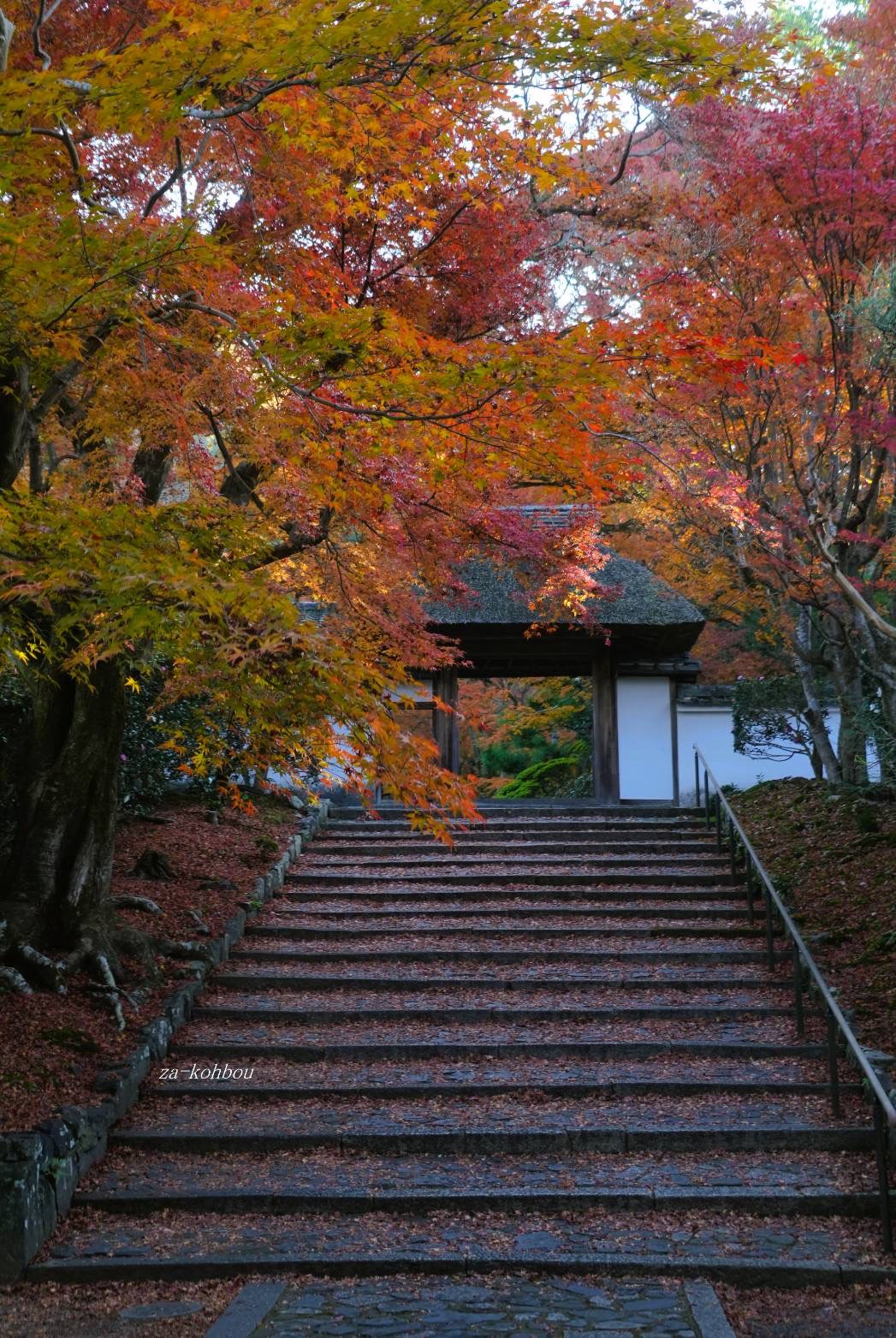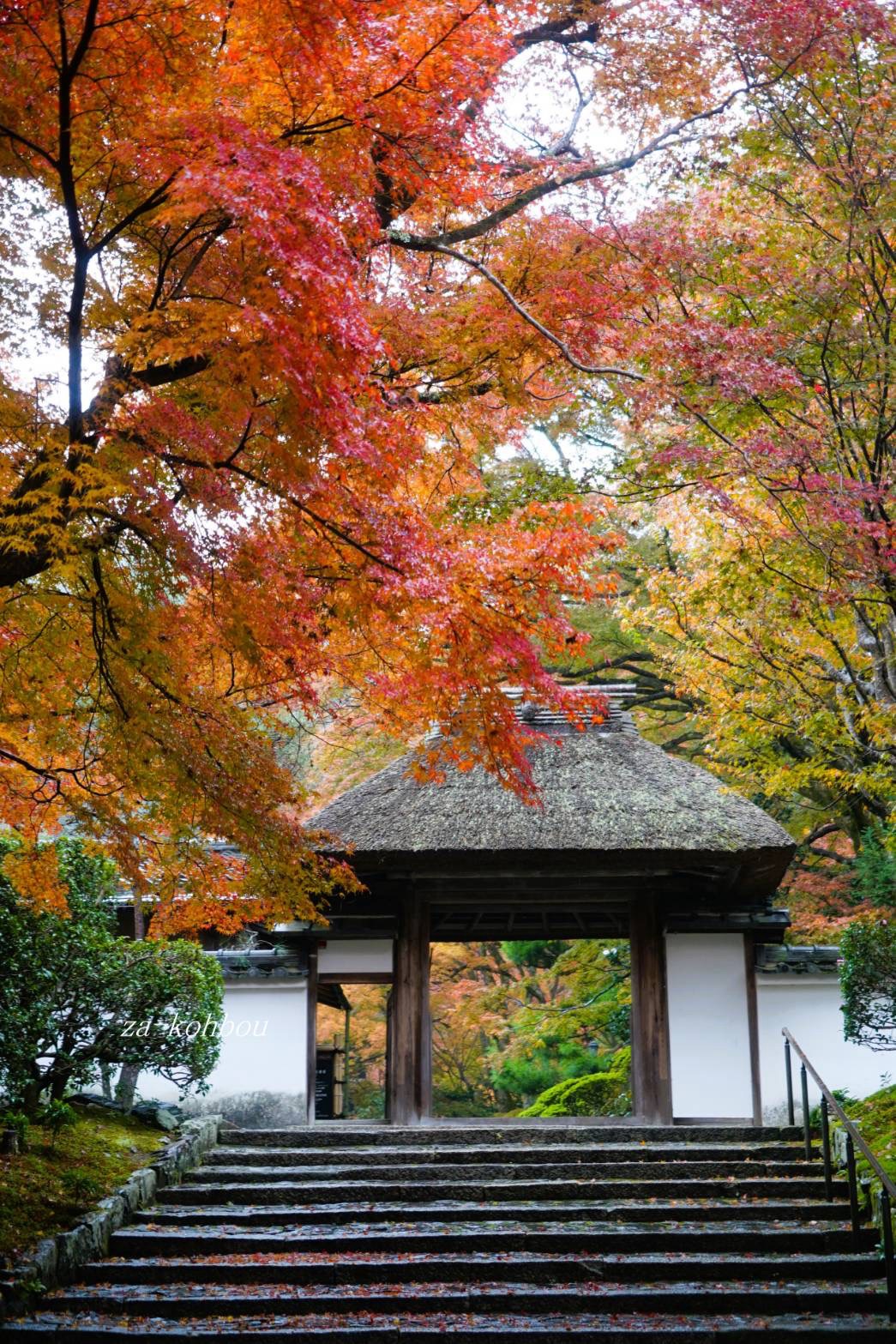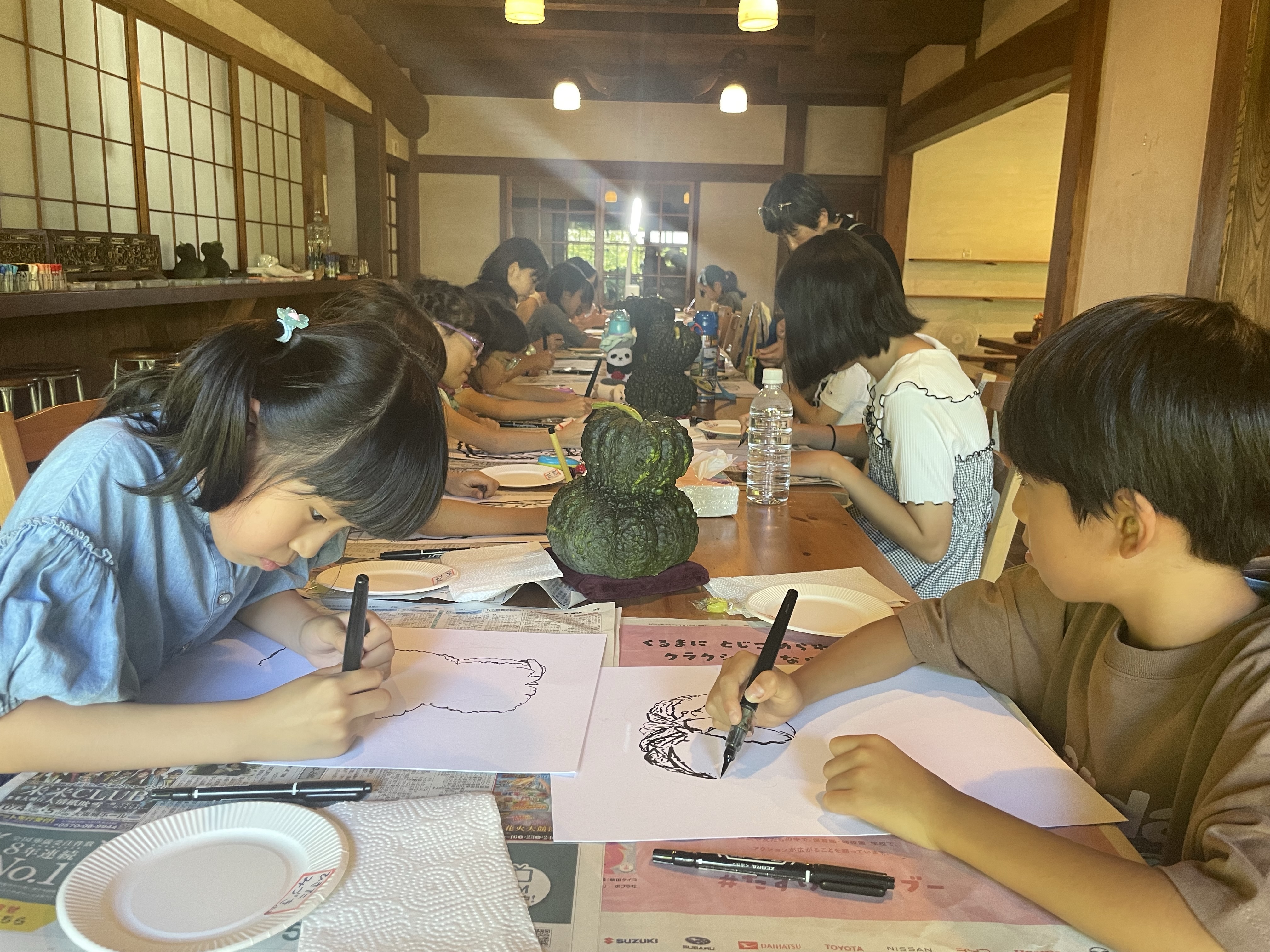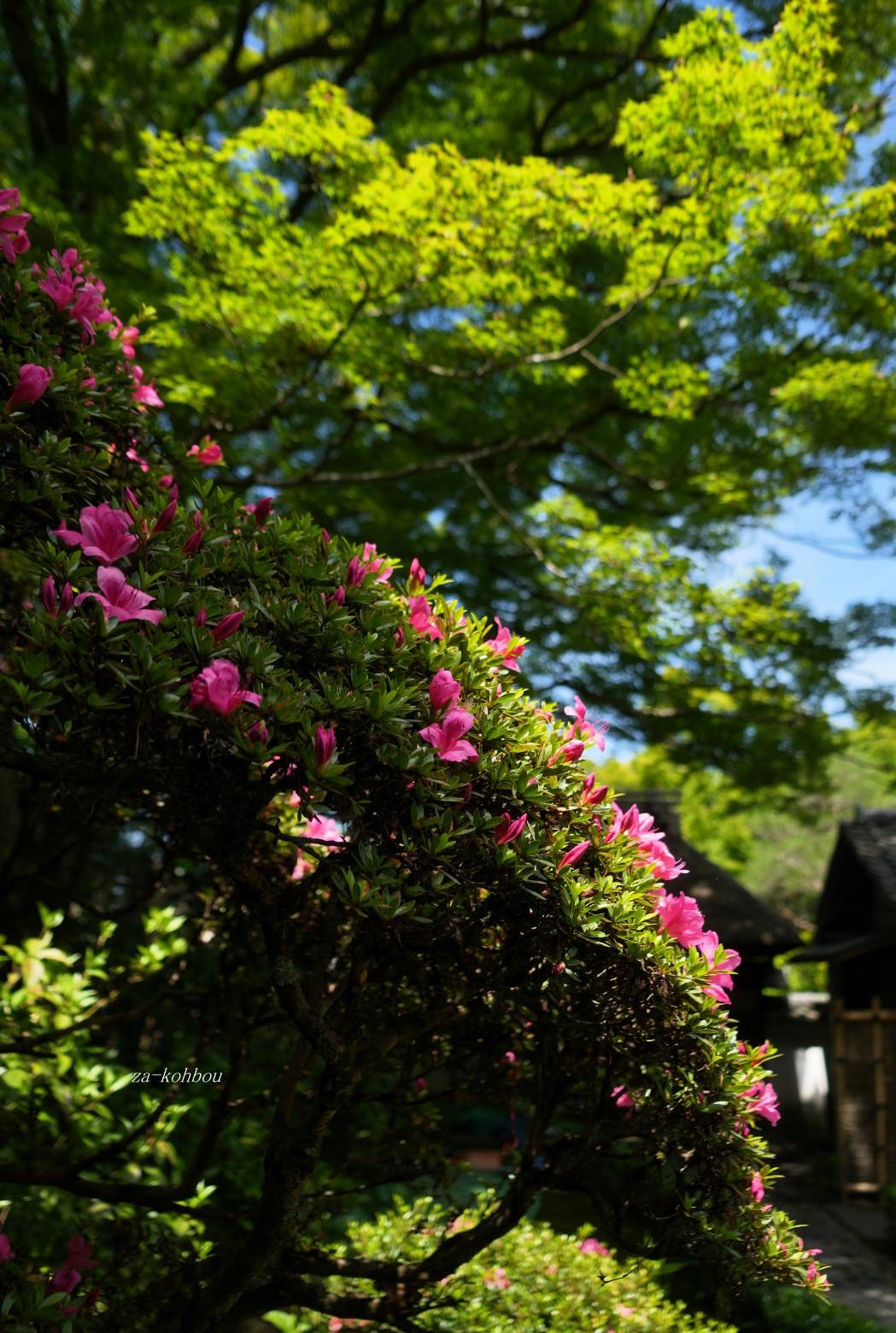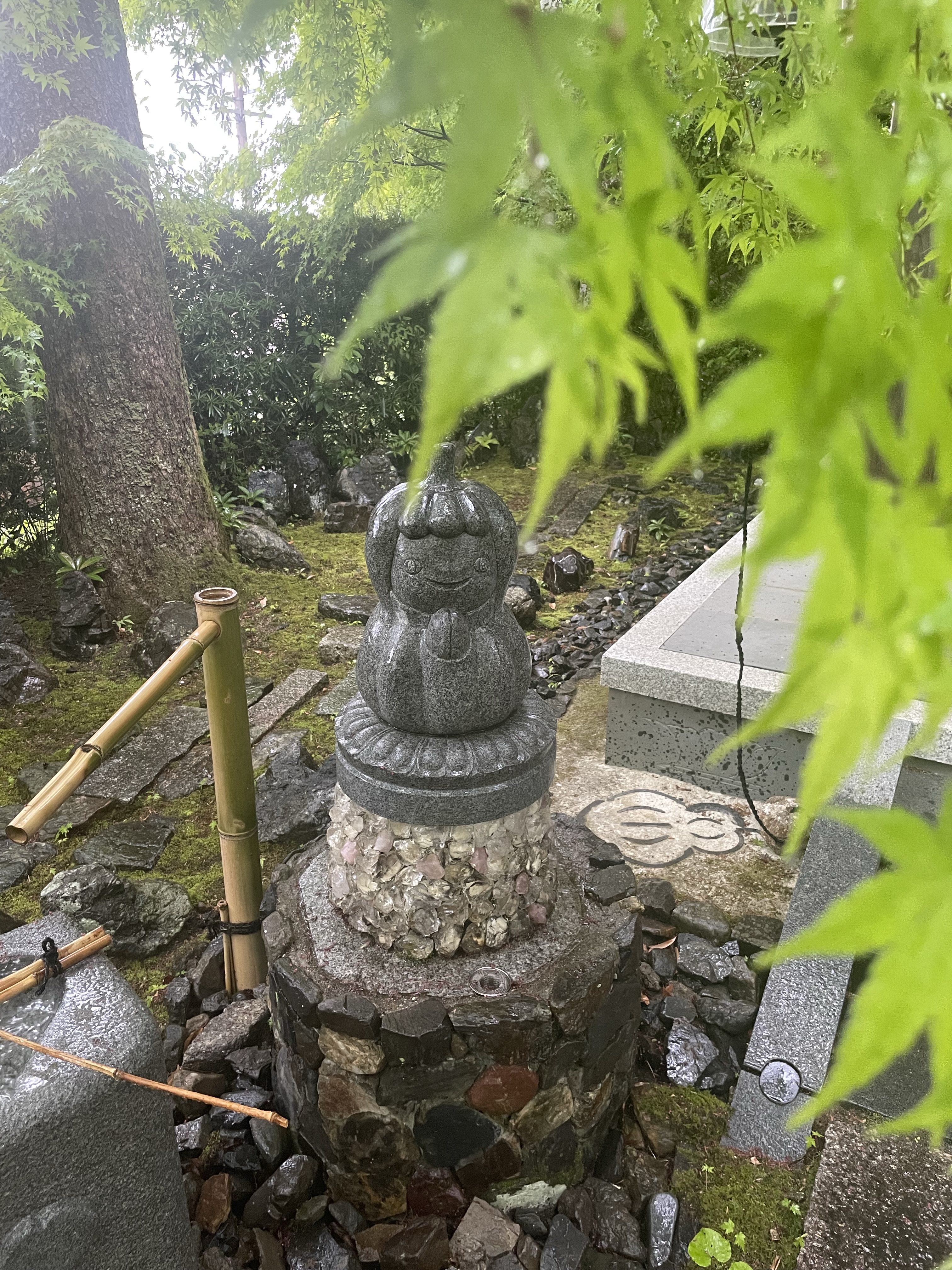安楽寺の由来
Introduction of the Anraku-ji Temple
- JP
- EN
住蓮山安楽寺は、京都左京区鹿ヶ谷にあります。法然上人の弟子、住蓮上人と安楽上人を開基とします。この開山両上人が、現在地より東1キロメートルあたりに「鹿ヶ谷草庵」を結び、布教活動の拠点を持たれたのがこの寺のはじまりです。
山門前の石柱には、「浄土礼讃根元地」と刻まれています。開山両上人は、唐の善導大師(ぜんどうだいし)の『往生礼讃』に大原魚山(天台宗)の礼讃声明(らいさんしょうみょう)を転用して浄土礼讃を完成されました。両上人が称える礼讃は誠にすばらしく、両上人の前で出家を希望する人もありました。
その中に、後鳥羽上皇の女官、松虫姫と鈴虫姫がおられました。両姫は、法然上人や開山両上人から念仏の教えを拝聴し感銘され、いつしか仏門に入りたいと願うようになりました。建永元年(1206)12月、両姫は後鳥羽上皇が紀州熊野に参拝の留守中、夜中秘かに京都小御所を忍び出て「鹿ヶ谷草庵」を訪ね剃髪、出家を乞います。最初、両上人は出家を認めませんでしたが、両姫のお詠に感銘されます。
「哀れ憂き この世の中にすたり身と 知りつつ捨つる 人ぞつれなき」
19歳の松虫姫は、住蓮上人から剃髪を受け「妙智法尼」と法名を授かります。また17歳の鈴虫姫は、安楽上人から剃髪を受け「妙貞法尼」と法名を授かります。
この事を知った上皇は激怒し、念仏の教えを説く僧侶に弾圧を企てます。翌建永2年2月9日、住蓮上人は近江国馬淵(まぶち)(現在の滋賀県近江八幡市)で、同日安楽上人は京都六条河原(東本願寺近く)で斬首されました。この迫害はこれに止まらず、法然上人を讃岐国(香川県高松市)に流罪、親鸞聖人を越後国(新潟県上越市)に流罪に処します。いわゆる建永(承元)の法難です。
その後、両姫は瀬戸内海に浮かぶ生口島の光明防で念仏三昧の余生を送り、松虫姫は35歳、鈴虫姫は45歳で往生を遂げたと伝えられています。
また、両上人の亡き後、「鹿ヶ谷草庵」は荒廃しましたが、流罪地から帰京された法然上人が両上人の菩堤を弔うために草庵を復興するように命ぜられ「住蓮山安楽寺」と名付けられました。その後、天文年間(1532〜55)に現在地に本堂が再建され、今日にいたっています。
At the beginning of the Kamakura period [AD. 1192-1333] , the Anraku-ji temple was first built by Anraku and Juren. They were the disciples of the Holy Priest Honen [1133-1212] , the founder of the chanting of Namu Amida-Butu ( “I worship thee, Amida Budda”).
Honen’s simple message of salvation was heard with joy by the common people in an age of crisis . that is, in the Kamakura period in which Japanese history entered the first phase of organized feudalism after a long period of aristocratic rule.
It was not long, however, before the imperial court became increasingly convinced that the doctrine of the faith sect, which taught the equal salvation for all people, was incompatible with the unity and safety of the society, and finally the persecution was ordered by the retired emperor Gotoba on the pretext that Matsumushi and Suzumushi, the concubines of Gotoba, without permission entered the faith sect of Amida under the guidance of Anraku and Juren. Honen was exiled and both Anraku and Juren were executed [1207]. It is remembered as “Persecution in the Kenei’ era”, for such a serious action against the Buddhist community was of rare occurrence in the history of Japan.
After a time the present Anraku-ji temple was re-built for the sake of consoling the spirits of the disciples and concubines.
拝観のご案内
For All Anrakuji-temple Visitors
年間スケジュール
| 春 | さくら /4月上旬の土日 つつじ / 5月上旬の土日・祝日 さつき /5月下旬〜6月上旬の土日 |
|---|---|
| 夏 | 鹿ケ谷カボチャ供養 / 7月25日 |
| 秋 | もみじ /11月全土日・祝日、12月上旬の土日 |
| 公開時間 | 10:00~16:00 |
| 拝観料 | ¥500(中学生以下無料) ¥1,000(かぼちゃ供養日) |
春と秋の一般公開について

住蓮山安楽寺は、京都左京区鹿ヶ谷にあります。法然上人の弟子、住蓮上人と安楽上人を開基とします。この開山両上人が、現在地より東1キロメートルあたりに「鹿ヶ谷草庵」を結び、布教活動の拠点を持たれたのがこの寺のはじまりです。
山門前の石柱には、「浄土礼讃根元地」と刻まれています。開山両上人は、唐の善導大師(ぜんどうだいし)の『往生礼讃』に大原魚山(天台宗)の礼讃声明(らいさんしょうみょう)を転用して浄土礼讃を完成されました。両上人が称える礼讃は誠にすばらしく、両上人の前で出家を希望する人もありました。
その中に、後鳥羽上皇の女官、松虫姫と鈴虫姫がおられました。両姫は、法然上人や開山両上人から念仏の教えを拝聴し感銘され、いつしか仏門に入りたいと願うようになりました。建永元年(1206)12月、両姫は後鳥羽上皇が紀州熊野に参拝の留守中、夜中秘かに京都小御所を忍び出て「鹿ヶ谷草庵」を訪ね剃髪、出家を乞います。最初、両上人は出家を認めませんでしたが、両姫のお詠に感銘されます。
「哀れ憂き この世の中にすたり身と 知りつつ捨つる 人ぞつれなき」
団体参拝について

住蓮山安楽寺では、春と秋の時期に、お花の開花にあわせて庭園をはじめ、本堂と書院を一般公開させていただいております。この日時の他でも、寺院様の団体参拝につきましては、法要に支障のない限り、受付をさせていただいております。
当山は、法然上人に二十五霊場の番外寺院として、あるいは松虫姫・鈴虫姫ゆかりの寺院として、全国各地よりご参詣をいただいております。また、親鸞聖人や蓮如上人とも深いご縁がある寺院です。当山は、親鸞聖人が越後国直江津のご配流になられたことに起因する寺院です。さらに浄土真宗の中興・蓮如上人は、松虫姫・鈴虫姫のご出家にまつわる史実を、女人往生説と織り混ぜて、専修(せんじゅ)念仏のみ教えをわかりやすく布教されました。
本堂西側には、法然上人の七十四歳のお姿と伝承される「法然上人張り子像」が安置されています。その左側には、親鸞聖人が越後国直江津に流された三十五歳のお姿と伝承される「親鸞聖人旅姿像」が安置されています。遠く室町時代の頃から、ご門徒さまにも数多くご参拝があり、江戸時代に親鸞聖人のお木像を迎えたのだと思います。
団体参拝の日時が決まりましたら、前もって当山にご連絡をいただきますようお願い申し上げます。詳しくは、お問い合わせ下さい。
なお、大型バスをご利用してのご参拝の時は、銀閣寺市営駐車場をご利用ください。疎水べり(哲学の道)を散策しながら、徒歩10分ほどの距離です。マイクロバスの場合は、山門近くまで入ることができます。
Public opening doors in spring and fall seasons.
Anrakuji only opens for public when it is the time for the flowers viewing in spring and fall. Visitors can go into “Hondo”, “Shoin”, and “Kyoto’s high rated gardens” at just this opening season.
Spring is the best known season for Sakura, Tsutsuji, Satsuki, and fall time is for Momiji leaves.
Then, the temple provides the explanation about the origin of the temple and the wooden statues for 10mins(Japanese only) at every 30 mins every day.
In the meantime, visitors can enter the “shoin room” to enjoy seeing a hanging scroll (a treasure of the temple)
※when no events happens.
Interpreting the scroll is also available if requested(Japanese Only) at the same time. Moreover, visitors can get what called “Nokyo” (souvenir stamps) at last.
Anrakuji’s Yearly Schedule
| Spring | Sakura // Saturday, Sunday of the first 13days of April Tsutsuji // Saturday Sunday of the first 13days of May and national holidays Satsuki // the last 13days of May through up to the beginning of June |
|---|---|
| Summer | Shishigadani Squash Memorial Dedication (Kabocha Kuyo)//July. 25th |
| Fall | The Best times of autumn leaves // Every Saturday Sunday and National holidays of November, the Saturday Sunday of first 13days of December |
安楽寺地蔵縁日のご案内
About Jizo-Ennichi fair at Anrakuji-temple
「安楽寺 地蔵縁日」
2015年5月2日より毎月2日(
現在は年に4回の開催(令和7年度は4月5月10月12月に開催)/10時開門~16時閉門/入山料 500円 お土産付き
2015年5月2日、再建された地蔵堂で開眼供養を受けられたお地蔵様に合わせて、150年ぶりに「地蔵縁日」を再開されました。これから、お地蔵様の誕生日にあたる毎年4月、5月、10月、12月2日は安楽寺の「地蔵縁日」を皆様お誘いあわせてお参り下さいませ。
"Jizo-Ennichi fair at Anrakuji-temple"
On May 2nd, 2015, the fair called “Jizo-Ennnichi” was resumed for the first time in 150 years with the Jizo which had been served in the hall house, Jizo-do.
Date : On the 2nd each month
Time : 10 a.m. to 4 p.m.
Fee : 500yen per person
*Kids are free.
This includes a small gift.
和讃法要厳修ご案内
※和讃とは、仏教の教えや寺の由来などを讃歎(さんだん)した歌のことをいい、仏教讃歌のひとつです。『安楽寺松虫姫鈴虫姫和讃』は、その題名が示すように、安楽寺の縁起について述べた和讃です。
4月29日(祝) // 鈴虫姫祥月命日(午前11時より)
6月第1日曜日 // 開山忌(午後1時より)
11月18日 // 松虫姫祥月命日(午前11時より)
上記以外の月も、定期的に練習会を開催(電話にてお問い合わせください)。一般の皆さまも参加者募集しております。
カボチャ供養
July.25th
Shishigatani Squash (Kabocha) Memorial Dedication
住蓮山安楽寺では、毎年7月25日の9時から15時(入山)まで「中風まじない鹿ヶ谷カボチャ供養」を勤めています。当日ご参拝されたお方に、煮炊きされた鹿ヶ谷カボチャを食べていただき、中風にならないよう祈願する行事です。
鹿ヶ谷カボチャは、寺伝によると、寛政年間をはじめ(1790年頃)、京都の粟田に住んでいた玉屋藤四郎(たまやとうしろう)が青森県に旅行した際にカボチャの種をお土産に持ち帰りました。鹿ヶ谷の庄米兵衛に与え、当地で栽培したところ、突然変異して、ひょうたんの形になったといわれています。
この頃、当寺の住職、真空益随(しんくうえきずい)上人が本堂でご修行中、ご本尊阿弥陀如来から「夏の土用の頃に、当地の鹿ヶ谷カボチャを振る舞えば中風にならない」という霊告を受けられたそうです。以後7月25日に供養日を定め、今日にいたっています。220年続く伝統行事です。当日の受付・調理・配膳などは、すべて檀信徒の方々にお手伝いをしていただいています。
また、門先では、鹿ヶ谷カボチャを特別に栽培していただき納品していただいている「かね正」さんが鹿ヶ谷カボチャをはじめ加茂ナス、万願寺トウガラシ、九条ネギ、柊野ササゲなど珍しい京野菜を販売されます。こちらの方も、お楽しみ下さい。に命ぜられ「住蓮山安楽寺」と名付けられました。その後、天文年間(1532〜55)に現在地に本堂が再建され、今日にいたっています。

→2023年度カボチャ供養の様子(2)
→2023年度カボチャ供養の様子(1)
→2006年度カボチャ供養の様子
→2004年度カボチャ供養の様子
→2002年度カボチャ供養の様子
Jyurenzan Anrakuji-temple has a Shishigatani Memorial dedication from 9am to 3pm, on July.25th.
This is for people to pray not to catch a paralysis. Anrakuji provides a small dish of simmered special Shishigatani squash for all visitors to avoid the illness.
According to a biography of the temple, in 1790s, a man, Toshiro Tamaya lived in Kurita Kyoto traveled to Aomori in Japan. Then, he brought back a seed of a squash and he tried growing it. Surprisingly the mutation of the squash occurred, and it is said that the shape was like a beer bottle.
At that time, the chief priest named Shinkuu Ekizui, who was training at Hondo building in Anrakuji, got a divine message by Amida Buddha. The message was, “provide a Shishigatani squash on mid-summer, and people do not get a paralysis.” After that, the date July.25th was set as memorial service day, and then it has been being held for 250 years since then.
People who work for making the special squash dish on the day are all believers of Anrakuji-temple for generation to generation today.
Moreover, there is a little small exhibition to show valuable possessions such as “Anrakuji-Engie”,”Teihatsu-Zu”, “Kusou-Zu” (hanging scrolls) on that day at the Hondo building.
The temple also offers interpreting (Japanese only) about those scrolls from 10am to 3pm at the same time.
Visitors can purchase “Kyoto vegitables” such as KamoNasu(Kyoto eggplants), red peppers, Kujyo green oninons, Hiiragino beans, and Shishigatani Kabochas on that day, available at a front gate of the temple.
Would you want Kyoto fresh vegetables at your home dinner?

中風まじないの御守りと御祈祷

中風除御守 現在の価格はおひとつ1,500円

中風除御守の中には、毎年カボチャ供養で振る舞われた鹿ケ谷カボチャの種が入っています
夏の土用の頃に当地の鹿ヶ谷カボチャを振る舞えば中風にならない。と1970年頃から始まり7月25日に供養日を定め今日に至る安楽寺の伝統行事を『鹿ヶ谷カボチャ供養』といいます。この御守りの中には鹿ヶ谷カボチャで皆様に振舞われた鹿ヶ谷カボチャの種が入っております。
中風=現在では脳血管障害の後遺症である半身不随、手足の痺れや麻痺などのことをいいます。どうか御利益がありますように‥と一つ一つ丁寧に手作りされました。メールまたは電話にてお問合せ頂ければご祈祷と先祖供養させて頂き発送致します。
−−
①御祈祷されたい方のお名前とフリガナ
②郵便番号とご住所
③連絡先の電話番号
④発送先のお名前
⑤先祖供養の苗字 (〇〇家先祖代々、〇〇家先祖代々)
⑥ご希望の御守りの色 (緑色、ピンク色、橙色、紫色、黄色)
⑦お支払い方法 (現金書留か銀行振込)
⑧その他ご要望
−−
※先祖代々は複数の供養もさせて頂きます。
ご希望の御守りの色が売り切れの場合、メールにて報告させて頂きます。 御守りはお一つ1,500円、御祈祷代と送料として3000円~お振込み下さい。スマートレターにて発送予定です。
−−
電話:075-771-5360
メール:kojun0620@yahoo.co.jp
振込口座:京都信用金庫 銀閣寺支店
普通0299340
宗教法人安楽寺
松虫姫鈴虫姫和讃
Wasan of Princess Matsumushi and Princess Suzumushi
和讃(わさん)とは、和文で仏・菩薩や仏教の教え、寺の由来、あるいは先徳の伝記や行蹟などを讃歎した歌のことをいい、訓伽陀・御詠歌と並ぶ仏教讃歌のひとつです。
『安楽寺松虫姫鈴虫姫和讃』は、その題名が示すように、安楽寺の縁起について述べた和讃です。つまり後鳥羽上皇の女官であった松虫姫と鈴虫姫が、安楽寺の開山である住蓮上人と安楽上人のもとで剃髪染衣(ていはつぜんね)を求め出家するいきさつが、七・五調の句を重ね、美しい調べにのって語られています。
安楽寺の由来物語と照らし合わせてご覧ください。
Wasan is Japanese hymn of showing respect to Bosatsu, Hotoke, and temples with big acclaim; it’s a one of the famous Buddhist hymns out of Kunkada and Goeika.
Anrakuji’s Wasan of Princess Matsumushi and Princess Suzumushi is the one about Anrakuji temple’s dependent origination.
The hymn with 5-7-5 syllables show the situation in which the two princesses, used to work for the emperor Gotoba, wanted to shave their hair to become a priest under the priests; Jyuren and Anraku.
Please enjoy the Wasan of the narrative as well as Anrakuji’s great history.
→Wasan of Princess Matsumushi and Princess Suzumushi (Japanese)



